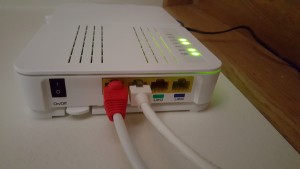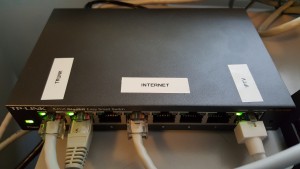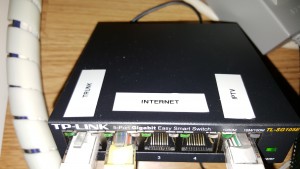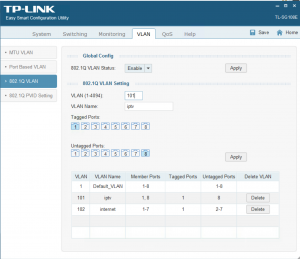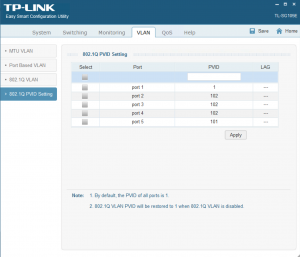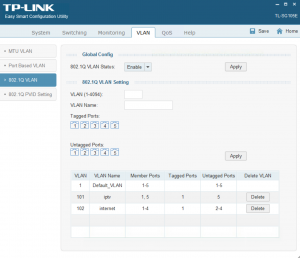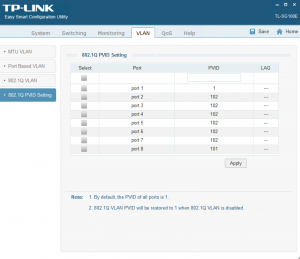Home fiber for internet and TV
It is great to have fiber to the home with speeds up to 1G. The home gateway from IP-Only has multiple ports to connect services like internet and TV. The challenge for anybody with both internet and TV (ex. Viasat) is how to setup your home network. Do I have to have 2 separate networks? The answer is NO.
This article describes what is needed to use one home network to connect both internet and TV. Hope this articles can help. Another articles in Swedish is available which can be used to understand how to set things up but it lacked some of the pictures in this article (refer to the end of this post under references).
The key is that one network is used to create 2 "virtual" networks, one for internet and one for TV. The virtual network is also called virtual LAN or VLAN. This article will describe how to setup 2 VLAN's in one network.
There are 4 main steps to setup:
- Purchase material
- Plan connections
- Physically connect the smart switches
- Configure the smart switches (PC required)
Disclaimer: There may be details I have left out but I hope that the information is enough to get your started. The setup works but 1 mistake can make it not work.
1. Purchase material
You will need at least 2 smart switches. There are two suggestions below both from TP-Link. Personally I used one of each, the rest of the instructions will refer to each smart switch by the model number.
Kjell&Company - TP-link TL-SG105E for 399SEK (webhallen has for 299SEK but limited availability)
Webhallen - TP-link TL-SG108E for 415SEK
2. Plan connections
The following table is needed in order to understand the following steps. I have created two VLAN network, one numbered 101 (iptv) and the other 102 (internet).
This table is the physical ports for each smart switch.
| VLAN 1 (trunk) | VLAN 101 (iptv) | VLAN 102 (internet) | |
|---|---|---|---|
| TL-SG108E | 1-8 | 1, 8 (8 is in) | 1-7 (2 is in) |
| TL-SG105E | 1-5 | 1, 5 | 1-5 |
This table is the the configuration of the ports. Ingress means traffic into the switch and egress means traffic out of the switch. The VLAN has to add a "tag" (ex. 101) when entering the switch (ingress) and "untag" when existing the switch (egress).
| Switch | TL-SG108E | TL-SG105E | ||||
|---|---|---|---|---|---|---|
| Port | 1 | 8 | 1-7 | 1 | 5 | 2-4 |
| Egress rule | Tag | Untag | Untag | Tag | Untag | Untag |
| PVID | 1 | 101 | 102 | 1 | 101 | 102 |
3. Physically connect the smart switches
The following picture is of the fiber gateway. The first port is for internet. The second port is for TV. The internet is connected to the WiFi router not shown in the picture.
In the TL-SG108E the TV cable is connected to port 8. The ports 2-7 are setup for the any devices in the home, the WiFi router connects to any of these ports. The port 1 is the "home network" which will have the 2 VLAN's between the rooms.
The TL-SG105E looks very similar to TL-108E. The port 5 is connected to Viasat STB in the next picture.
The final picture is the Viasat STB.
4. Configure the smart switches
From PC start program with TP-Link. It will find the switches. Manual is in the references at the bottom.
TL-SG105E Configuration for VLAN:
TL-SG105E Configuration PVID:
TL-SG108E Configuration for VLAN:
TL-SG105E Configuration PVID:
Once the smart switches are configured the home network over VLAN should be ready to go.
References
